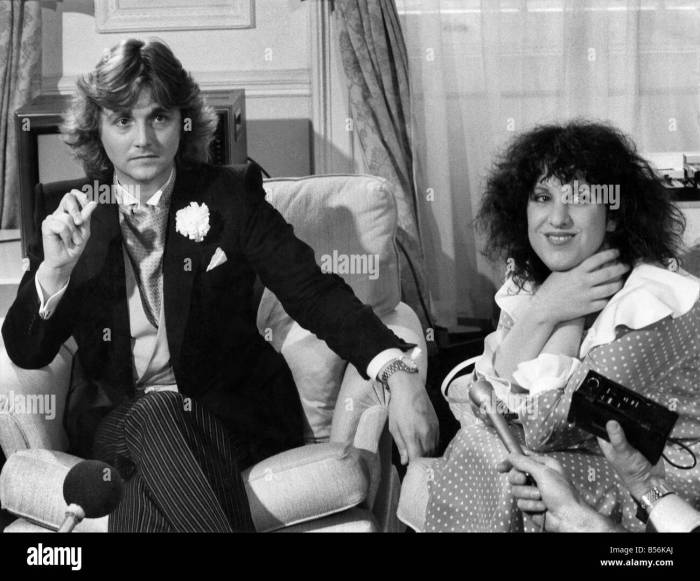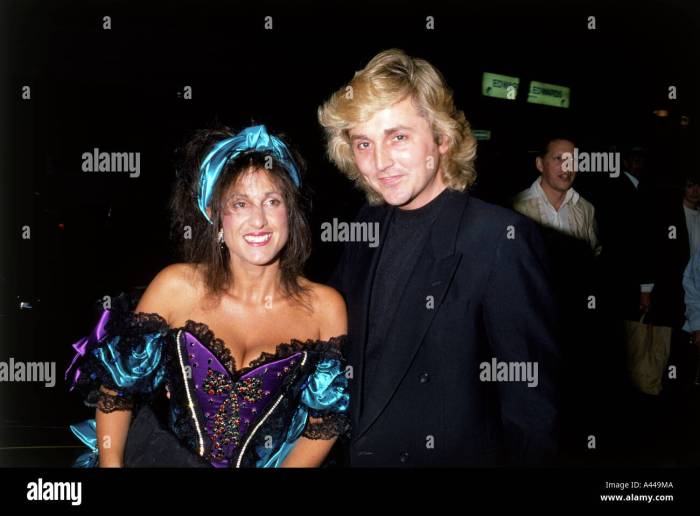Who Designed Princess Dianas Wedding Dress?
The Designer: David Emanuel
Who designed princess dianas wedding dress – David and Elizabeth Emanuel, a husband-and-wife design team, were chosen to create Princess Diana’s wedding gown. Their collaboration with the then-Lady Diana Spencer was a significant undertaking, marked by both creative synergy and logistical challenges.
The Collaboration Process
The Emanuels worked closely with Diana throughout the design process, incorporating her preferences and vision. Numerous fittings and design revisions took place, ensuring the final gown perfectly reflected her style and personality. Diana’s input was crucial, particularly regarding the silhouette and the inclusion of specific details. The process was collaborative, with open communication and mutual respect shaping the final design.
Initial Design Concepts and Sketches
Early sketches showcased a variety of styles, ranging from more traditional designs to more modern interpretations. Diana was initially drawn to a more classic silhouette, but ultimately opted for a design that blended traditional elegance with a contemporary flair. The final design incorporated elements from several initial concepts, resulting in a unique and memorable gown.
Design and Creation Challenges
Creating a wedding gown for a global icon presented unique challenges. The sheer scale of the undertaking, the intense media scrutiny, and the need to maintain secrecy throughout the process were significant factors. The Emanuels had to manage the logistical complexities of creating such an intricate gown within a tight timeframe, ensuring the highest quality of craftsmanship.
Comparative Analysis of Design Elements

Source: alamy.com
Compared to other wedding dresses of the 1980s, Diana’s gown stood out for its voluminous silhouette, the antique lace, and the incorporation of both traditional and modern design elements. While many dresses of the era featured more structured designs, Diana’s gown embraced a softer, more romantic aesthetic. It notably departed from the then-popular trend of slimmer, more fitted silhouettes.
Design Elements and Inspiration: Who Designed Princess Dianas Wedding Dress
The gown’s design incorporated several key elements, each contributing to its overall impact. These elements were carefully chosen to reflect both Diana’s personality and the historical context of the event.
Key Design Features
The dress featured ivory silk taffeta, antique lace, a voluminous skirt, and puff sleeves. The antique lace, sourced from a variety of locations, added a touch of history and elegance. The taffeta provided a luxurious texture, while the puff sleeves and skirt created a dramatic and romantic silhouette.
Historical and Cultural Influences
The design drew inspiration from various historical and cultural sources. The antique lace, for instance, alluded to a rich history of craftsmanship. The voluminous skirt and puff sleeves echoed romantic styles from previous eras. The overall design successfully blended tradition with a contemporary touch.
Symbolism and Meaning
The design choices were not merely aesthetic; they held symbolic meaning. The antique lace represented a connection to the past, while the voluminous skirt symbolized a sense of grandeur and romance. The ivory color represented purity and innocence, traditional connotations associated with bridal wear.
Design Comparison: Then and Now
| Feature | Description | Inspiration | Modern Equivalent |
|---|---|---|---|
| Silhouette | Voluminous, puff sleeves, full skirt | Romantic styles of previous eras | Modern ballgown styles, often with a more structured bodice |
| Fabric | Ivory silk taffeta, antique lace | Luxury, tradition, historical significance | Silk, satin, lace; often incorporating modern fabrics and embellishments |
| Lace | Antique Carrickmacross lace | Historical elegance, intricate craftsmanship | Modern lace appliqués, often combined with other fabrics |
| Train | 25-foot train | Grandiosity, dramatic effect | Long trains remain popular, but lengths vary based on style and venue |
The Making of the Dress
The creation of Princess Diana’s wedding dress was a meticulous and collaborative process, involving a skilled team of artisans.
Materials and Techniques
The dress was constructed using high-quality ivory silk taffeta and antique lace. The lace was painstakingly applied to the gown using intricate hand-sewing techniques. The construction involved complex tailoring and embroidery work, requiring exceptional skill and precision.
The Dressmaking Team
A team of seamstresses and embroiderers worked tirelessly to create the dress. The Emanuels oversaw the entire process, ensuring that every detail met their exacting standards. The team’s expertise and dedication were essential to the gown’s successful creation.
Key Steps in the Dressmaking Process, Who designed princess dianas wedding dress

Source: alamy.com
- Pattern cutting and draping
- Fabric selection and preparation
- Lace application and embroidery
- Construction of the bodice and skirt
- Fitting and alterations
- Final assembly and finishing touches
Public Reception and Legacy
Princess Diana’s wedding dress was met with overwhelming enthusiasm and continues to hold a significant place in fashion history.
Public Reaction
The dress captivated the world’s attention. Millions watched the wedding on television, and the gown’s image was widely circulated in newspapers and magazines. It was praised for its beauty, elegance, and the way it reflected Diana’s youthful radiance.
Lasting Impact on Wedding Fashion

Source: co.uk
The dress had a profound and lasting impact on wedding fashion. Its voluminous silhouette, puff sleeves, and use of antique lace have inspired countless bridal gowns since. The gown’s romantic and timeless appeal continues to resonate with brides today.
Influence on Modern Wedding Dresses
Many modern wedding dresses incorporate elements inspired by Diana’s gown, such as voluminous skirts, puff sleeves, and intricate lace details. The dress’s influence can be seen in the enduring popularity of romantic and elegant bridal styles.
Significance in Fashion History
Princess Diana’s wedding dress remains an iconic piece of bridal fashion history. Its enduring appeal lies in its combination of classic elegance and modern flair. The dress transcended its time, becoming a symbol of romance, style, and a pivotal moment in history.
The Dress’s Visual Impact
The visual impact of Princess Diana’s wedding gown was undeniable, a combination of several striking design elements.
David and Elizabeth Emanuel designed Princess Diana’s iconic wedding gown, a breathtaking creation that captured the world’s attention. The dress’s antique lace and voluminous skirt inspired many interpretations, including modern designs featuring similar elements like the elegant white with silver wedding dress styles popular today. The Emanuels’ design for Diana remains a benchmark of bridal fashion, influencing countless gowns in the decades since.
Puff Sleeves and Voluminous Skirt
The puff sleeves added a touch of whimsy and romance, while the voluminous skirt created a dramatic and regal silhouette. The combination of these elements gave the dress a sense of fairytale grandeur, perfectly suited for a royal wedding.
Lace and Embroidery
The antique lace and delicate embroidery added intricate detail and texture to the gown. The lace, with its delicate patterns, created a visually stunning effect, enhancing the overall elegance and sophistication of the design.
Train Length
The 25-foot train added to the dress’s dramatic impact, trailing behind Diana as she walked down the aisle. The length of the train emphasized the grandeur of the occasion and created a truly unforgettable visual spectacle.
Descriptive Paragraph of the Dress’s Appearance
Imagine a breathtaking gown of ivory silk taffeta, cascading into a magnificent 25-foot train. Puff sleeves frame delicate shoulders, and antique lace, like whispered secrets, adorns the bodice and skirt. The fabric flows with ethereal grace, creating a cloud-like silhouette that exudes romance and regal splendor. Each meticulously placed stitch speaks of timeless craftsmanship, resulting in a dress that is both breathtakingly beautiful and historically significant.
FAQ Summary
Was the dress made entirely of silk?
No, while silk was a major component, antique lace and other fabrics were also used.
How many people worked on the dress?
A team of several seamstresses and craftspeople contributed to its creation.
What happened to the dress after the wedding?
It’s privately owned and rarely seen publicly.
Did Diana have any input in the design?
Yes, she was heavily involved in the design process, collaborating closely with the Emanuels.

















